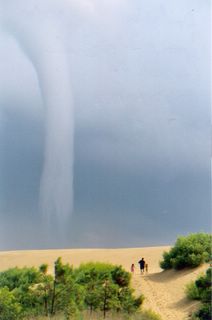The Natural Resources Defense Council has released their annual report on water quality at our nation's popular recreational beaches. Not surprisingly Dare County fares pretty well in the report. The
detailed state section (scroll down for results) showed that most of the water quality problems were in the sound rather than the more popular ocean beaches.
The worst offender (and a perennial problem site) was the Private Sound Acess in Southern Shores. Water quality here failed to meet the state's standards over 10% of the time. The Jockeys Ridge public soundside access and the swimming beach in Colington Harbor also reported at least one failed testing cycle. On the Ocean side each of the 3 ocean outfalls in KDH had a single failure while the rest of the county's sites tested clean for the entire year.
An interesting feature of the report is an
interactive map showing results for the 200 most popular beaches in the country. Nags Head made the list showing 4 out of five stars for the ocean beaches and 3 out of 5 for the soundside. (note the 2 soundside sites shown in this section are actually the same place in the sound about 100 yds. north of Basnights Lone Cedar Cafe). All the sites did not receive star for testing frequency since NC tests once a week not twice a week as the NRDC recommends. The soundside site missed the grade for water quality history since the site had failing readings within the last 3 years. All the sites got credit for good quality in 2008, for post advisories promptly onlince and on the beach.
This is an annual report - I posted about it 4 years ago in the early days of this blog - the report has been a catalyst for increasing awareness about recreational water quality. Take a minute to read through the NC section and I think you will be pleased. North Caroina ranked 5th out of the 30 states listed in the report.
It should be noted that the state's testing is done on a regular schedule weekly and is not dependent on factors that contribute to water borne pollution, particularly rainfall. The UNC Coastal studies institute has monitoring stations set up in the outfall ditches in KDH and Nags Head. There testing shows substantial spikes in bacteria following rain events. Since salt water is not a good environment for bacteria these organisms generally die quickly when then enter the ocean therefore state testing will only catch these pollution peaks if their sample happens to coincide with a rain event. On the other hand the samples taken in the pipe do not reflect conditions in the ocean even at the mouth of the pipe since the 2 environments are so different.
OK what I as trying to say is that the State's testing may miss some of the pollution while the CSI doesn't test the water people swim in.
Ok enough for now - The rain has stopped so I guess I will go to the beach and go for a swim.
Ciao








